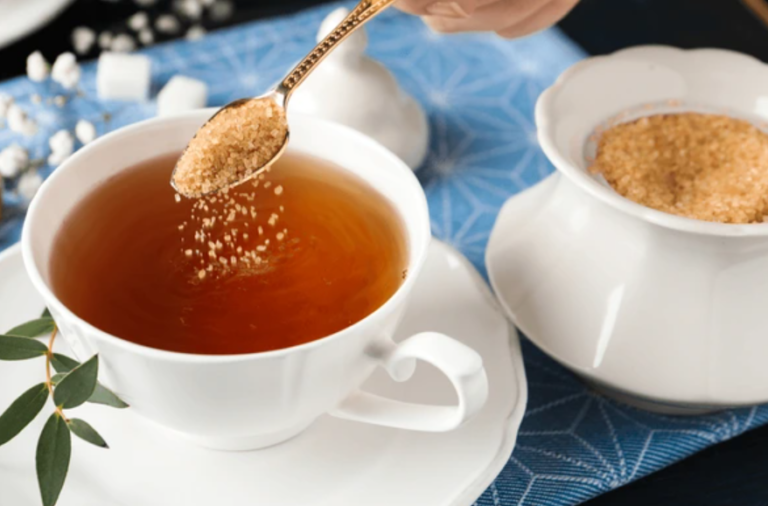Powdered sugar, also known as confectioner’s sugar or icing sugar, is regular sugar’s pampered cousin. Finely ground and often laced with anti-caking agents like cornstarch, it reigns supreme in frosting castles and dusts delicate pastries. Granulated sugar, on the other hand, is the workhorse of the kitchen, tackling everything from sweetening coffee to caramelizing onions.
So, can this fancy translate to the humble world of Chinese tea? The answer, just like a brewed cup, is nuanced. While powdered sugar offers undeniable benefits such as quick dissolution and a creamy mouthfeel, it comes with its quirks, such as cloudiness and slightly different levels of sweetness.
Prepare your taste buds, because we’re about to dive into the fascinating world of powdered sugar in tea. We’ll explore its pros and cons, delve into tips for optimal brewing, and ultimately answer the question: Can you use powdered sugar in tea? Buckle up, tea enthusiasts, because this is going to be one sweet ride!
Can You Use Powdered Sugar in Tea?
Forget the stirring struggle with stubborn granules! Powdered sugar waltzes into your hot tea like a dream, dissolving instantly in the warm embrace of the liquid. No frantic swirling, no clinking against the cup’s bottom – just pure, sweet serenity.
This speedy dissolution not only saves you precious moments of tea-time bliss, but also ensures even sweetness throughout your cup, eliminating those sugary pockets lurking at the bottom.
Sweetness on a Micro-Level: Controlling Your Cup’s Character
Remember those times you overshoot the sugar mark with a clumsy hand and your tea morphs into a candy-cane concoction? With powdered sugar, precise sweetness control becomes a reality.
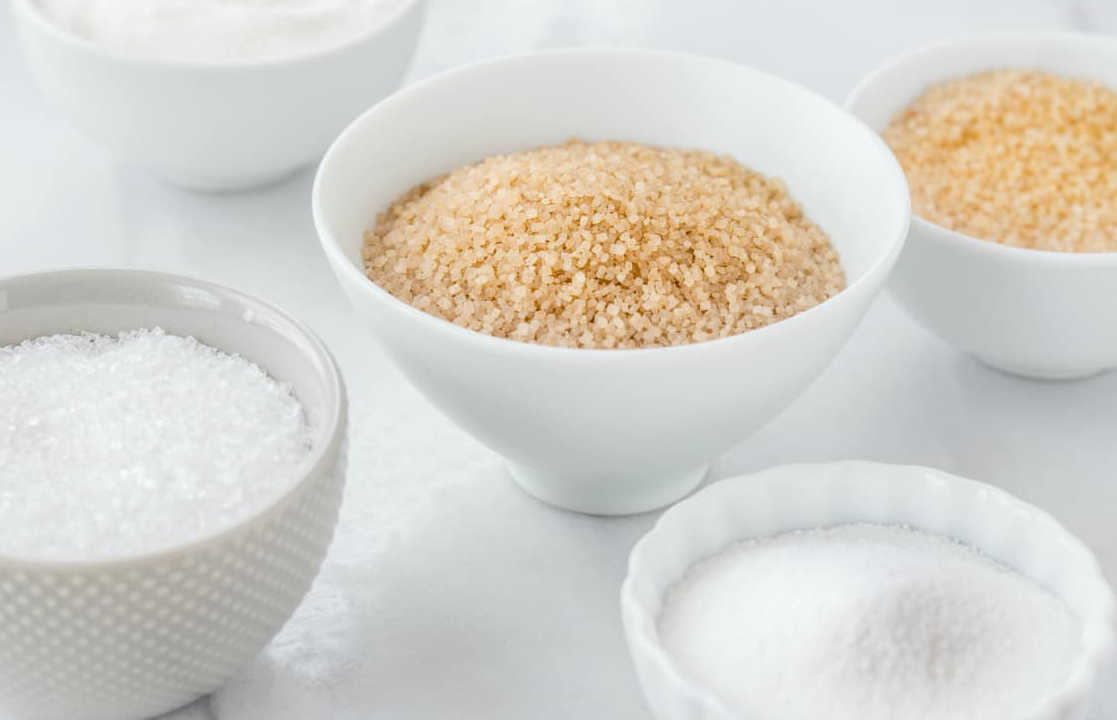
Its fine texture allows you to add sweetness in whisper-light increments, letting you personalize your cup to your exact desire. Want a subtle kiss of sweetness? A light dusting will do the trick. Craving a full-blown sugar serenade? Go ahead, sprinkle with confidence!
An Aesthetic Ally for Fancy Iced Tea
Forget the limp lemon slice – powdered sugar can be your iced tea’s secret weapon of style. Its delicate texture offers endless possibilities for artistic expression. From elegant swirls dusted on the surface to playful designs created with stencils, you can transform your iced tea into a canvas for sugary masterpieces.
So, whether you’re hosting a summer soirée or simply indulging in a solo sip of sunshine, let powdered sugar elevate your iced tea from an ordinary beverage to a visual feast.
READ: Smoking Chamomile Benefits
Brewing with Caution
Although the instant dissolution of powdered sugar is a siren song, beware of the dirty water it can leave behind. Anti-caking agents hidden within, often cornstarch, tend to cloud your once-clear tea, turning it into a milky mixture. While some may find it aesthetically pleasing, others may prefer the pristine transparency of sugar-sweetened cups.
Measuring Powdered Sugar’s Potency
Don’t be fooled by the innocent behavior of powdered sugar. This finely ground treat packs a sweet punch that can keep you awake. Its concentrated sweetness often means less is more, so be prepared to adjust your measuring spoon accordingly. Over-sprinkling can send your tea into a saccharine spiral, pinning you for days of subtle sweetness.
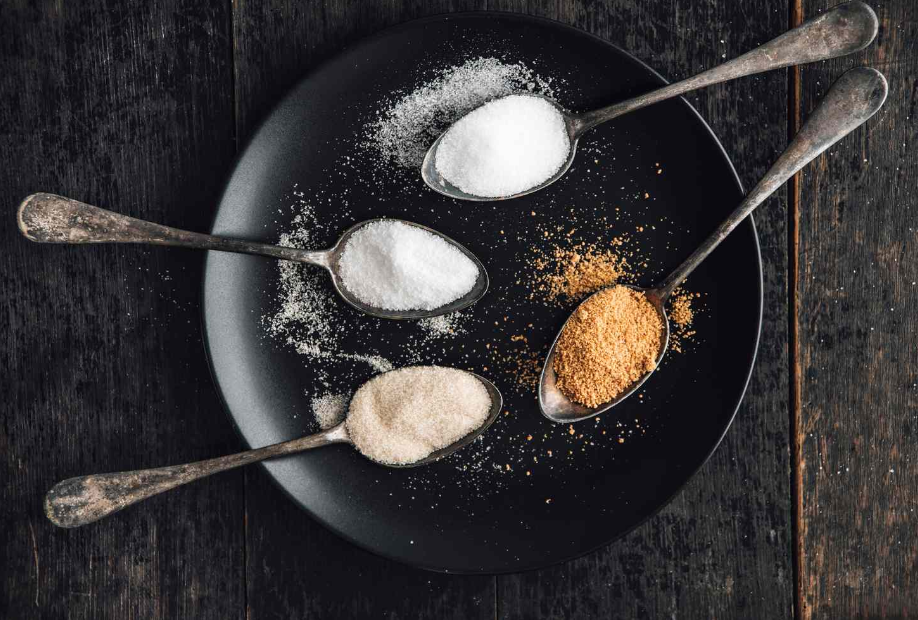
Price Points to Ponder
The convenience of powdered sugar comes at a slight cost. Compared to its humble counterpart, granulated sugar, powdered sugar often carries a slightly higher price tag. For the occasional tea-time sprinkle, the difference might be negligible. But for avid tea-guzzlers, the cost can add up over time.
So, while powdered sugar offers undeniable advantages, it’s not without its quirks. Consider these trade-offs before plunging into your sugar bowl for your next tea adventure.
Factors to Consider When Using Powdered Sugar in Tea
Although powdered sugar offers an intense sweetness solution, its interaction with your tea can vary based on several factors. So, let’s embark on a journey to master the art of powdered sugar in tea, tea varieties, temperatures, and “how much is enough?” Unravel the mystery of the crucial question of
Dancing with Different Tea Leaves
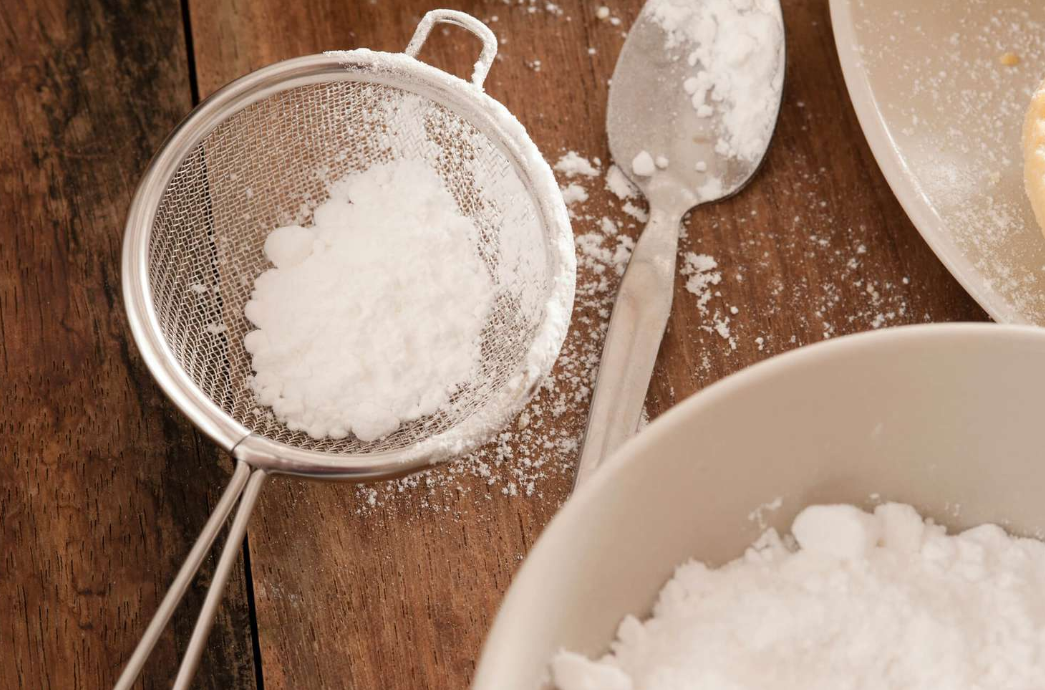
- Black tea: The robust body of black tea can handle powdered sugar’s sweetness without being overwhelmed. Use it for a touch of elegance in blends like Earl Grey or English Breakfast.
- Green tea: With its delicate flavor profile, green tea prefers a gentle hand with powdered sugar. Start with a minimal dusting and adjust to your taste, allowing the tea’s subtle notes to shine.
- Herbal infusions: The diverse world of herbal infusions invites experimentation. Fruity herbal blends embrace powdered sugar’s playful sweetness, while calming chamomile might prefer a touch of honey’s floral notes.
Hot or Cold, Sweetness Unfolds
- Hot tea: The warmth of hot tea readily embraces powdered sugar, dissolving it instantly and creating a smooth, integrated sweetness. This is the ideal environment for exploring powdered sugar’s artistic potential with latte art-inspired designs.
- Iced tea: In cold tea, powdered sugar’s dissolution slows down, leaving a slightly grainy texture. Consider pre-dissolving it in a small amount of hot water before adding it to your iced tea for a smoother experience.
The Art of Measurement: Less is More (Except When It’s Not):
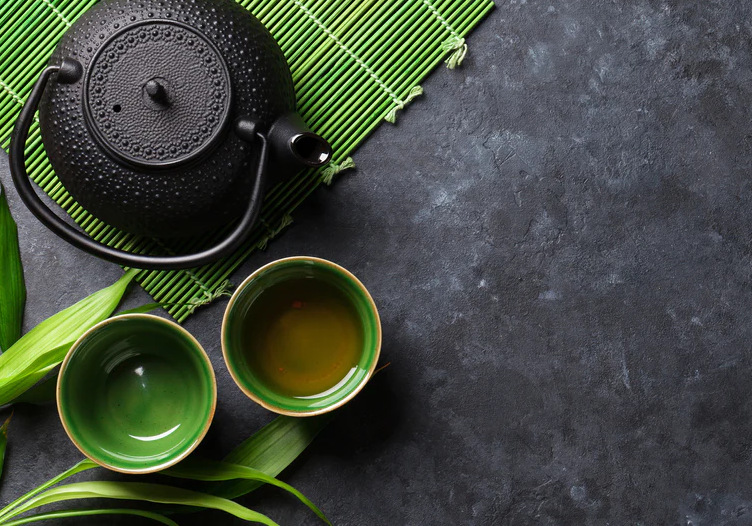
- General rule: Start with 1/2 teaspoon of powdered sugar per cup of tea and adjust to your taste. Remember, it’s sweeter than regular sugar, so go slow!
- Black tea: 1/2 to 1 teaspoon can elevate its richness.
- Green tea: A light dusting, around 1/4 teaspoon, is ideal to preserve its delicate notes.
- Herbal infusions: Experiment with 1/4 to 1/2 teaspoon, depending on the desired sweetness and the herbal blend’s intensity.
While powdered sugar offers its unique charm, remember you have options! Honey’s floral sweetness or agave syrup’s subtle touch can also grace your teacup. Explore and discover the perfect pairing for your taste buds.
READ: How to Dry Tea Leaves?
Tips and Tricks for Using Powdered Sugar in Tea
Let’s delve into the world of dissolving techniques and ensure your tea journey is as smooth as your sip. Remember, a little prep goes a long way:
- The Pre-dissolve Waltz: Before gracing your tea with powdered sugar, whisk it with a tiny amount of hot water in a separate cup. This creates a concentrated syrup that will melt seamlessly into your tea, leaving no trace of its grainy brethren.
- Spoonful Serenade: Gently stir your powdered sugar into the tea with a teaspoon, ensuring it disperses evenly. Avoid aggressive swirling, as that can create unwanted air bubbles.
- Strainer Symphony: For an extra-smooth experience, consider straining your tea after adding the powdered sugar. This eliminates any lingering clumps and delivers a silky-smooth texture.
Sweet Symphony
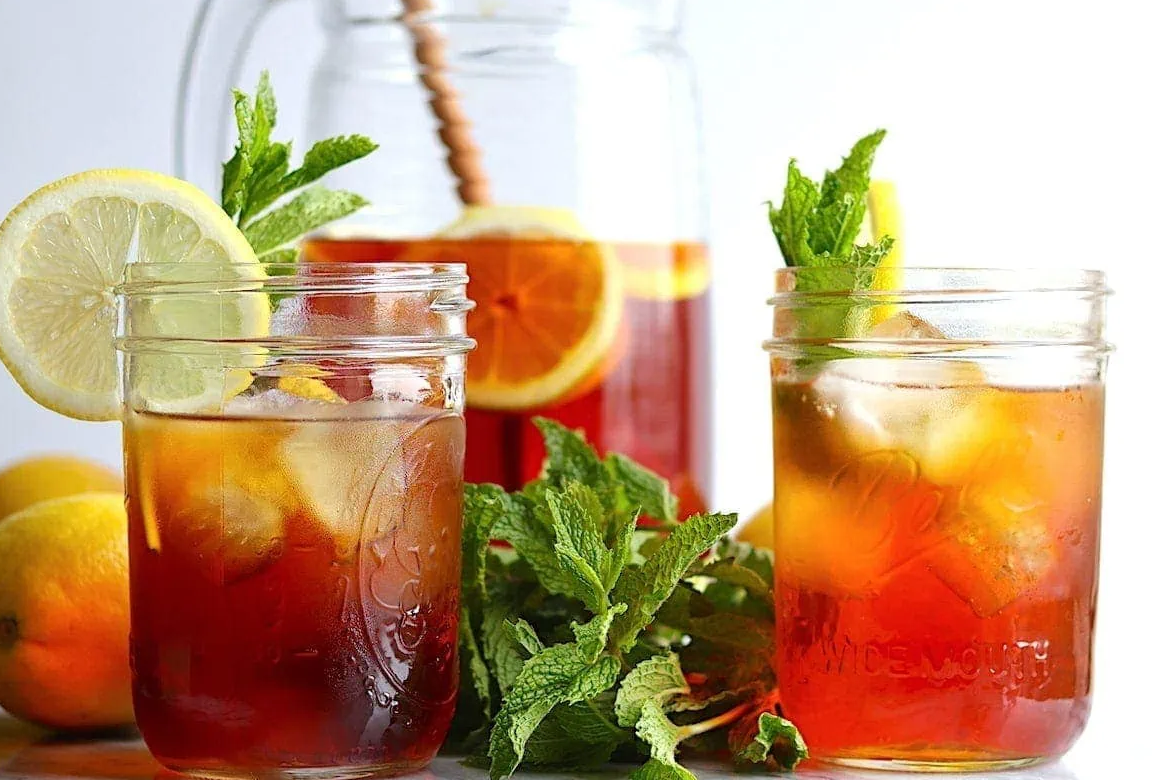
Powdered sugar isn’t just about plain sweetness; it’s a blank canvas for flavor exploration! Here are some tempting pairings to ignite your taste buds:
- Spice Up Your Life: Add a pinch of cinnamon, nutmeg, or ginger to your powdered sugar before sprinkling it on your tea. This creates a warm, comforting aroma and a delightful flavor twist.
- Mint Me Up: For a refreshing twist, infuse your powdered sugar with fresh mint leaves or a touch of peppermint extract. This invigorates your tea and creates a delightful contrast to the sweetness.
- Citrus Fiesta: A zest of lemon, orange, or grapefruit rind, mixed with your powdered sugar, can add a vibrant citrusy punch to your tea. Perfect for a sunny afternoon pick-me-up!
Iced Tea Art with Powdered Sugar
Iced tea isn’t just a beverage; it’s an artistic canvas! Let’s unlock the creative potential of powdered sugar:
- Stenciled Elegance: Place a stencil on top of your iced tea and dust powdered sugar over it. Voilà! You’ve got intricate designs gracing your beverage.
- Sugar Rainbows: Layer different colored powdered sugars in a shaker and sprinkle them over your iced tea, creating a mesmerizing swirl of sweetness.
- Floating Islands: Whip up some miniature meringues and top them with a dusting of powdered sugar. They’ll float on your iced tea, adding a delightful visual and textural surprise.
Conclusion
Powdered sugar in tea is a tempting proposition, offering instant sweetness and artistic possibilities. It dissolves like magic, lets you fine-tune the taste, and even turns iced tea into a canvas for swirling designs. But be warned, cloudiness can crash the party, and its intense sweetness requires a gentle hand. Plus, it might cost a tad more than regular sugar.
So, should you give it a go? It depends! If you crave instant gratification and a touch of flair, powdered sugar is your friend. But for delicate teas and budget-conscious sippers, other sweeteners might be a better fit.
Ultimately, the choice is yours. Experiment with different teas, temperatures, and techniques. Find what makes your cup sing, and share your powdered sugar adventures with the world!
Remember, the perfect cup awaits, crafted by your unique taste and creativity. Cheers to a world where every tea tells a tale, one delicious sip at a time!
RECOMMENDED ARTICLES
Can I Drink Tea After Brushing Teeth?
Is Chai Tea Better Than Coffee?
Does Chai Tea Make You Sleepy?
Additional Resources
Here are some relevant links to help you delve deeper into the world of tea, powdered sugar, and alternative sweeteners:
- World Tea News: https://www.worldteanews.com/
- Artful Tea: https://artfultea.com/blogs/101/types-of-tea-a-comprehensive-guide
- King Arthur Baking – All About Powdered Sugar: https://www.reddit.com/r/Baking/comments/kk7k9r/king_arthur_suggests_you_use_a_dusting_of_sugar/
- Cooks Illustrated – Powdered Sugar vs. Confectioners’ Sugar: https://www.foodnetwork.com/recipes/packages/baking-guide/what-is-confectioners-sugar
- Fine Cooking – 5 Things You Didn’t Know About Powdered Sugar: https://www.savoryexperiments.com/ingredient/powdered-sugar/
